So you are ready to buy a Spec Racer Ford here are items you should look at before purchasing a car. Big thank you to my fellow racers for providing me advice and information when I was looking for a Spec Racer Ford. This information forms the basis for this guide plus things I have learned since buying my own Spec Racer Ford. If you can, have a fellow experienced racer come along with you, they will know exactly what to look for.
Documentation & References
If the car has run in competition before it should have a Log Book. If the car is without a log book contact SCCA Enterprises with your chassis number. The log book should have the racing history of the car and it will give you a sense of how often and recent the car was run. If the car was run sporadically or hasn't run in awhile you will need to take care of maintenance items.
Spec Racer Fords mostly compete in SCCA and so if the car is in region the local racers or CSR should know about the car and who used to own it. Contacting a previous owner can be helpful, they might have a maintenance history or be able to tell you when major items like fuel cells and shock rebuilds were done.
The chassis number plaque should be in the cockpit. Check the chassis number against the log book. You can also find the chassis number stamped on the rear right chassis member next to the body pin.
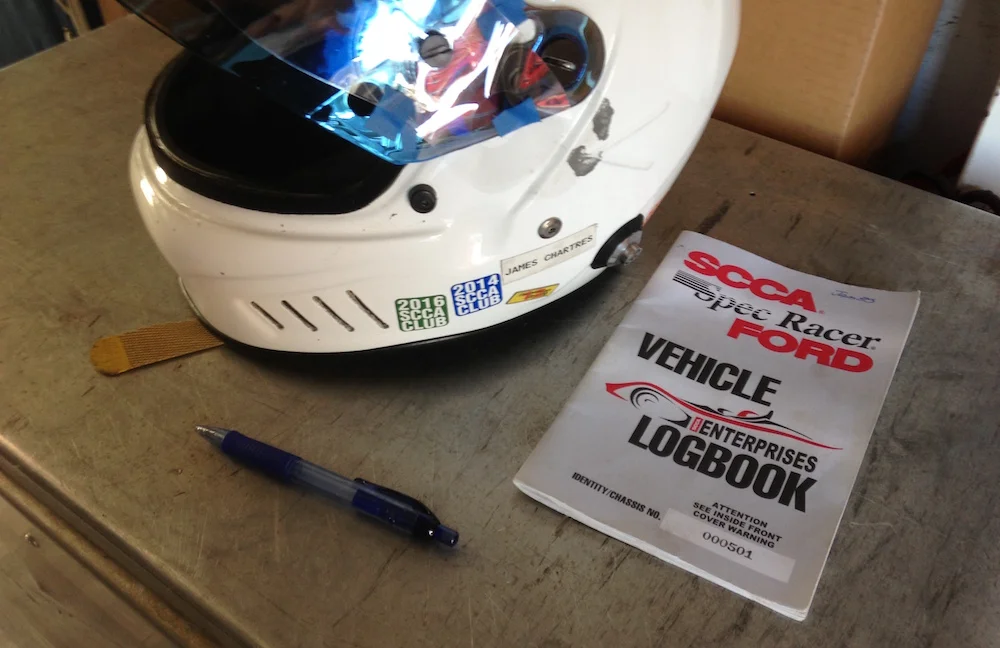
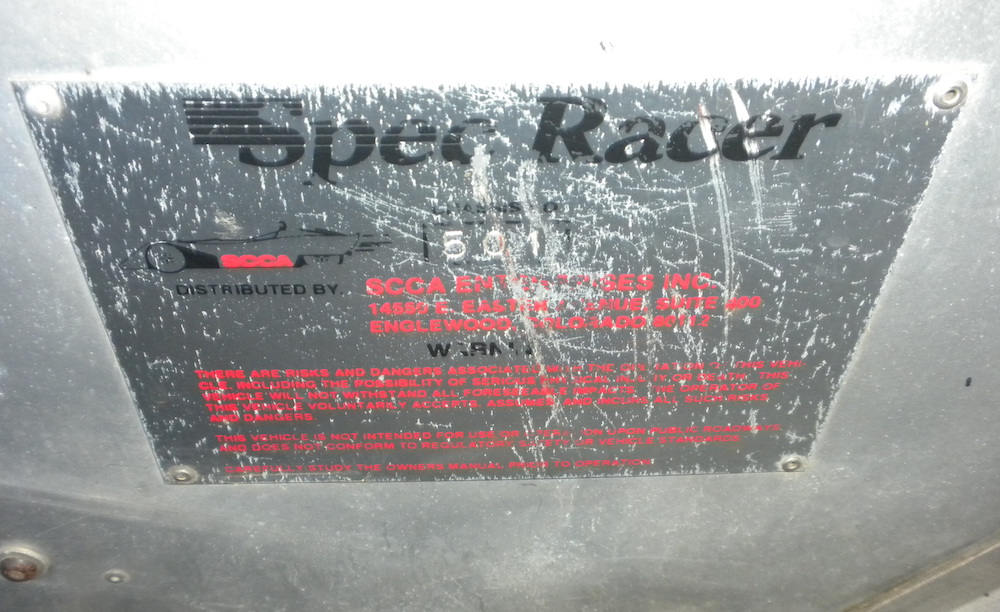

SAFETY EQUIPMENT
The Seatbelts are limited life items, you need to check the dates on the belt labels. SFI-rated harnesses need to be replaced every 2 years, FIA-rated belts every 5 years. Belts normally have 3 inch webbing but you can get belts that neck down to 2 inches for the shoulders. The 2 inch shoulder straps work better with head and neck restraint devices, like the HANS.
There are limited approved seats for the Spec Racer Ford and these are a specification item. The standard car comes with a fiber glass seat. You can also get a customized ButlerBuilt Seat. It is very important to check that either seat option fits you properly.
Inspect the condition of the roll bar padding and replace if necessary ensure it is FIA or SFI rated. You can also buy a new safety system that replace this padding, the Head Support System produced by ButlerBuilt.
Check the Fire Extinguisher Bottle located on the left hand side pod for the Gen2 and right hand side pod for the Gen3. See if it has a pressure gauge. If it doesn't have a pressure gauge it is probably old and needs to be weighed at tech, difficult and time consuming. Recommend you replace the bottle for a newer one with a gauge. If it has a gauge check it is in the green range and still good.
You also want to ensure the master switch works, you can do this when running the car and make sure it cuts of if you turn the switch. Make sure you have all the safety decals "E" for fire system and the blue triangle with lightening bolt for the kill switch.
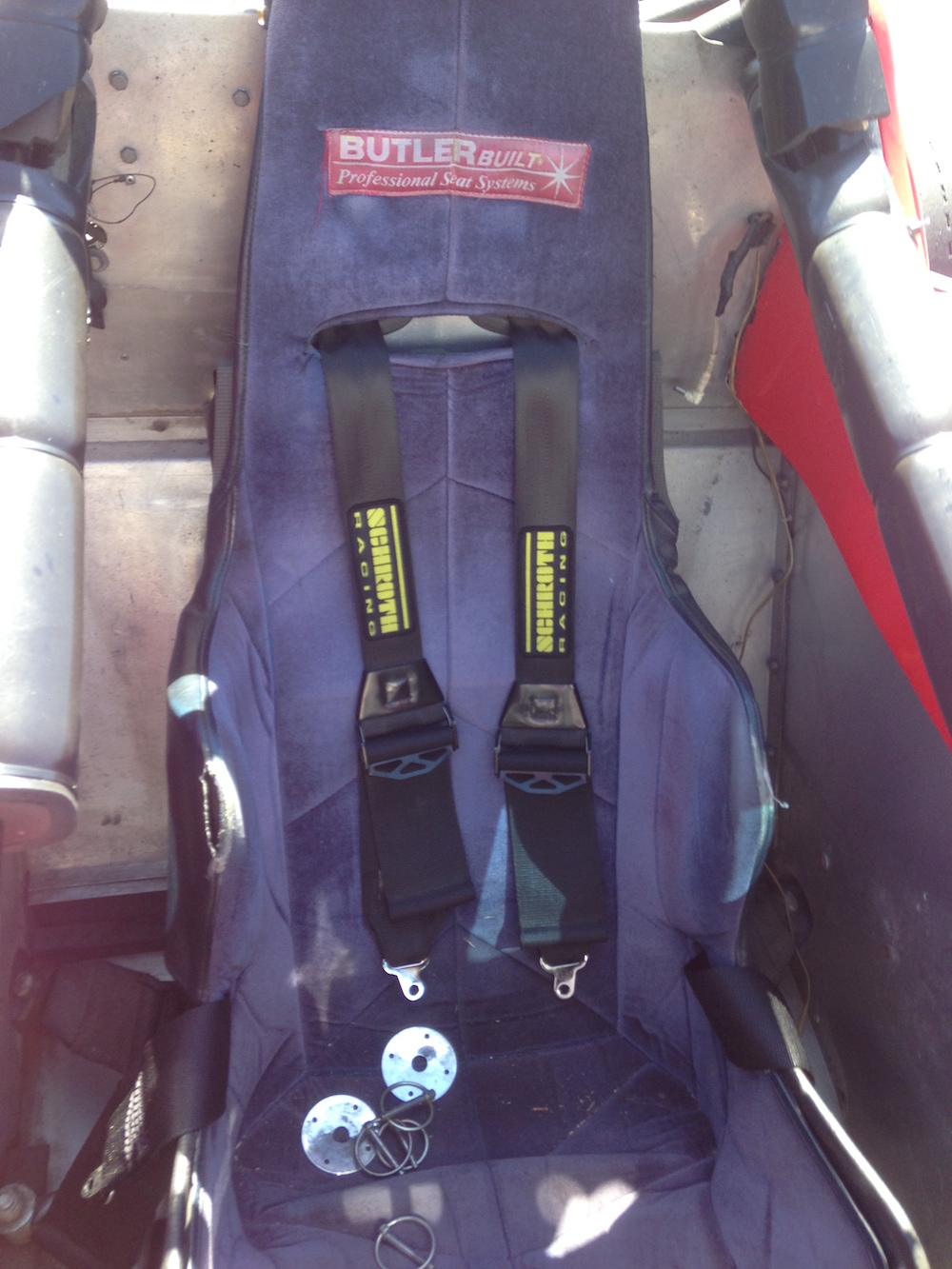
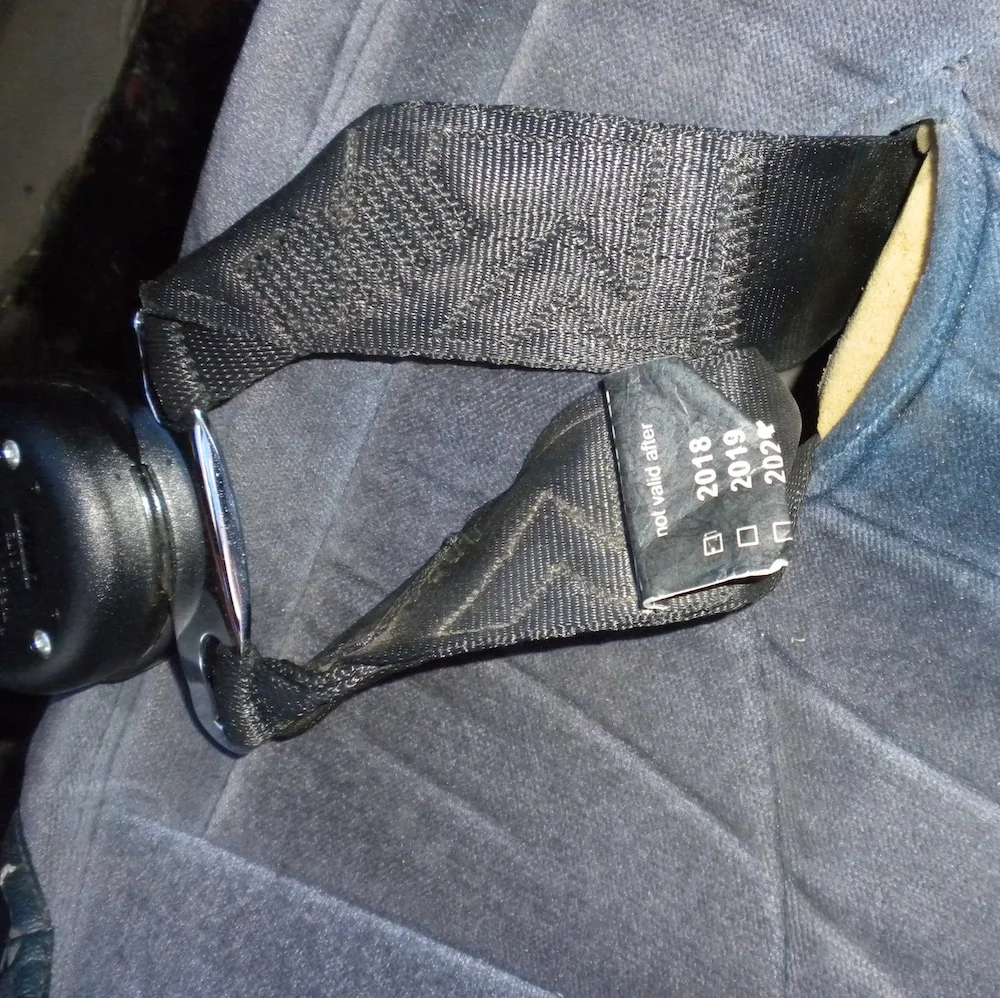
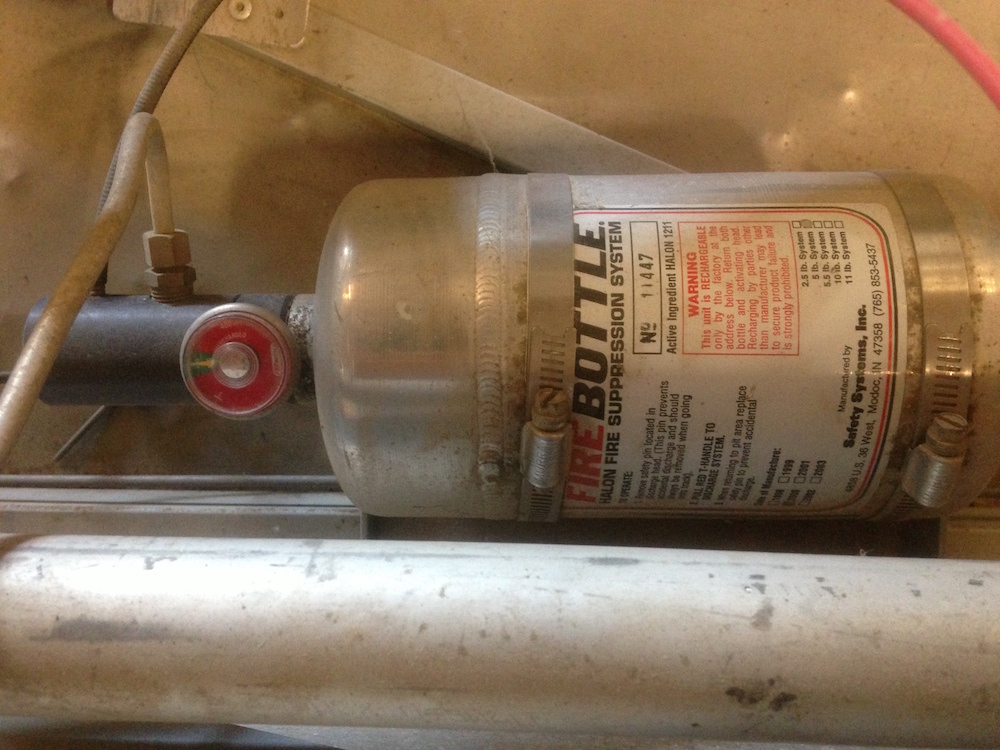
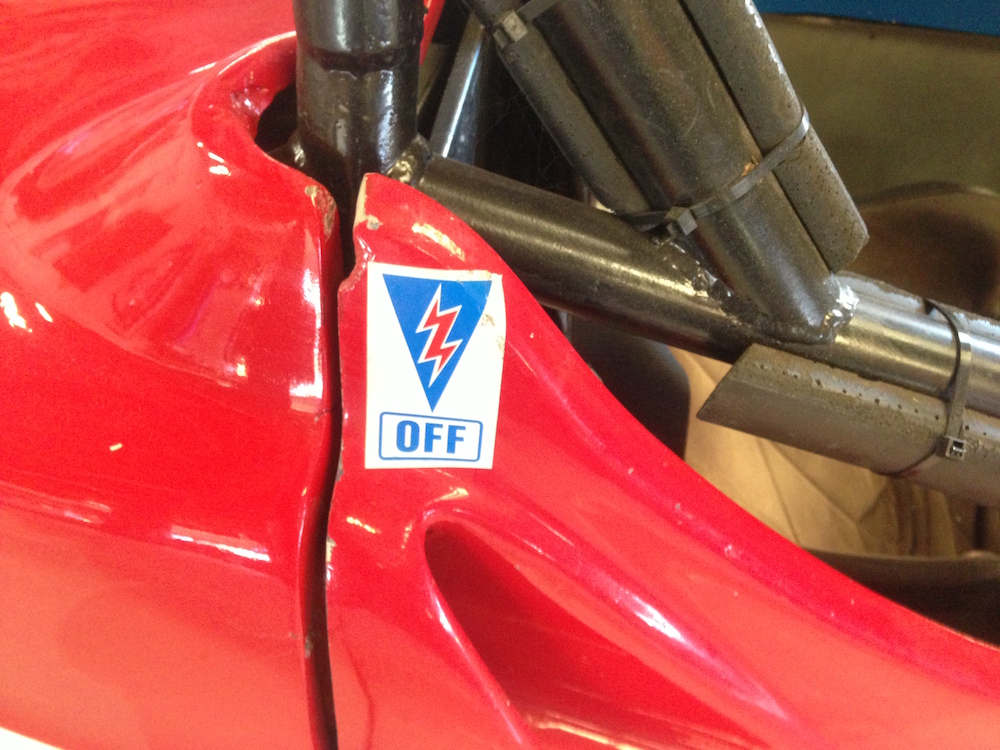

Chassis
Like any other car, check the paint and fit of the body work panels. If the paint needs redoing take that into account, it might also be a good opportunity to customize the livery to your liking. Remove the body work so you can inspect the chassis for bent or poorly repaired tubes. When removing the body work panels feel the weight and see if there is any poorly repaired fiberglass that will need future work.
Bent and repaired chassis tubes are indicators of accident damage, this is not necessarily a bad thing. It is a race car and accidents do happen. Inspect around the damaged areas to ensure there are no other issues from previous accidents.
Inspect the chassis for cracks and fatiguing, especially where the suspension mounts to the car. Assess all the motor and transmission mounts and make sure they are in good condition.
The front section of the Spec Racer Ford has a lot aluminum sheeting including the front nose pan and radiator cooling ducts. Inspect the condition and see if it needs to be replaced.
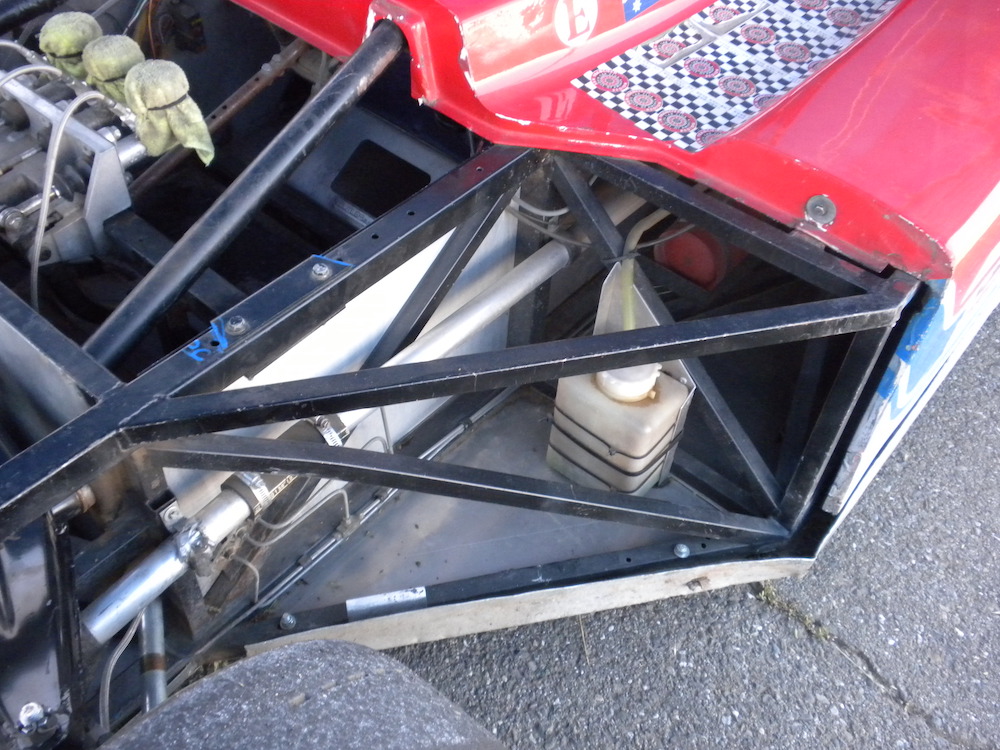
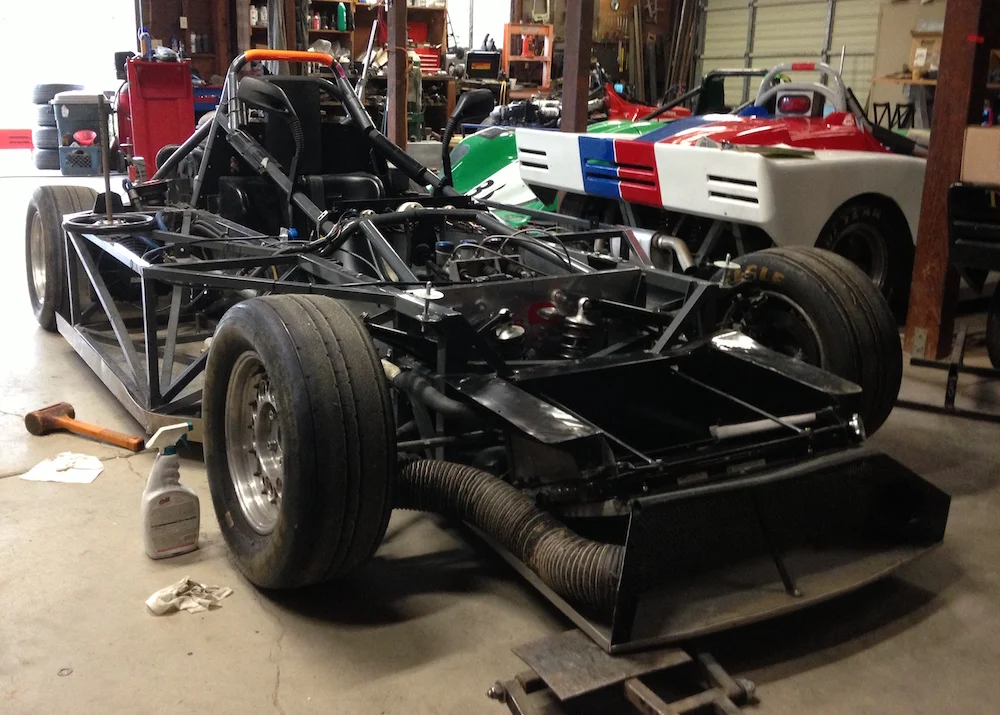
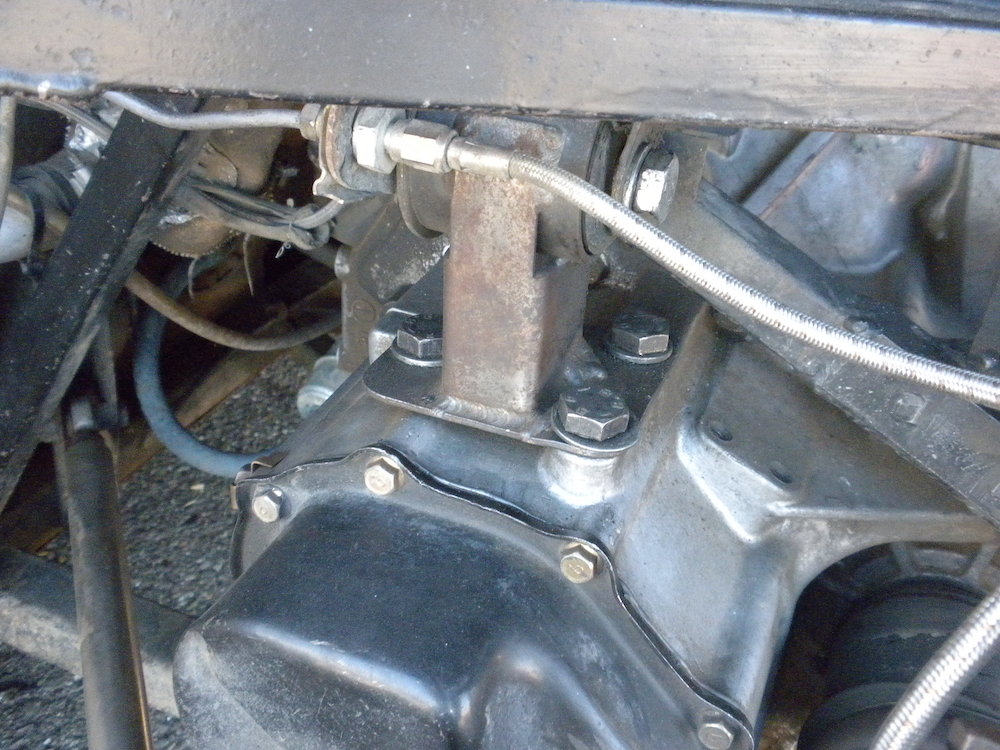


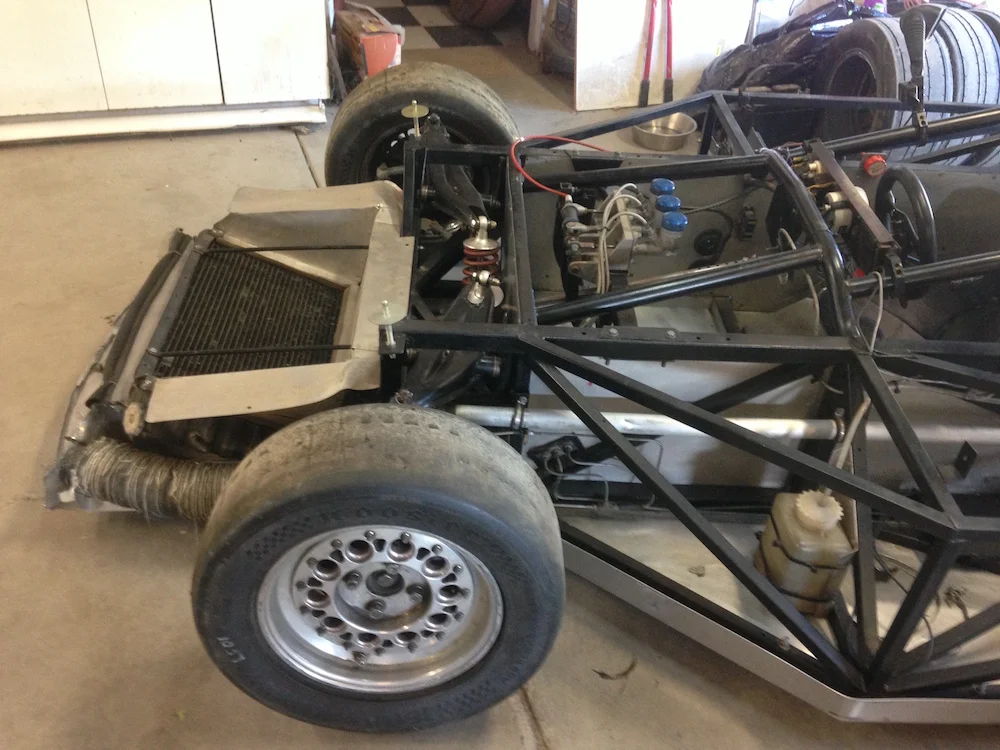
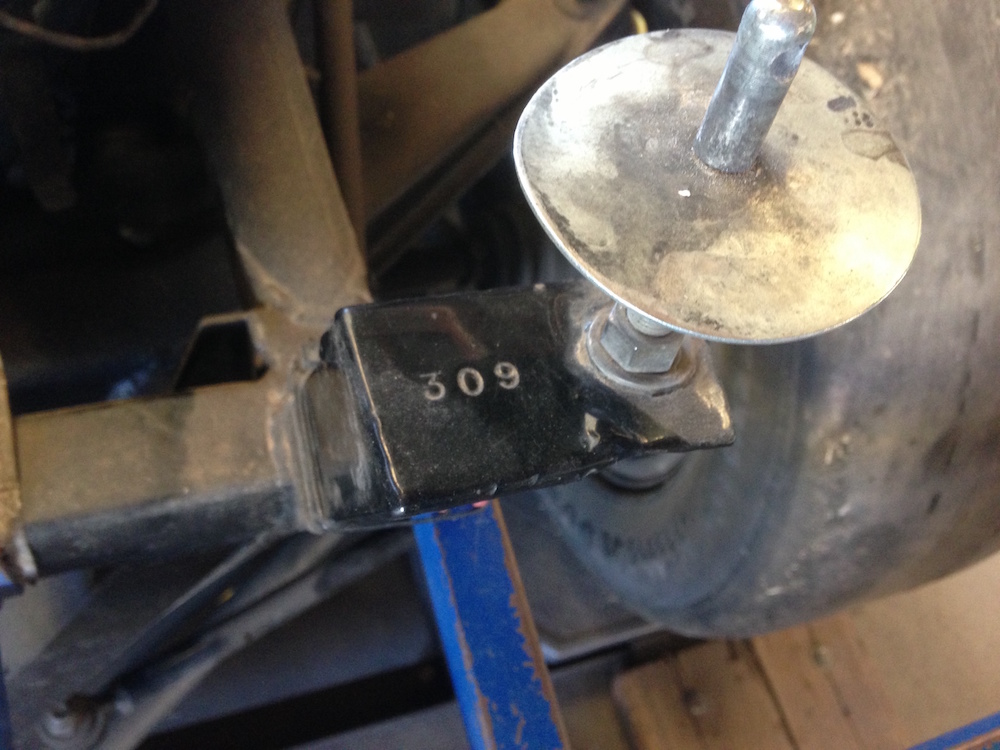
Engine and Drivetrain
The first thing to check is that the SCCA Enterprises engine and transmission seals are intact. Check the motor and transmission for any obvious oil or coolant leaks. Check oil, coolant and fuel lines for any weeping or signs of leaks like dried deposits. Check to see if the oil, coolant and fuel lines are rubber or braided. Braided lines tend to be more expensive but have greater abrasion resistance. Open up the air box and inspect the condition of the filter and box, excessive oil build up indicates blow by on the motor and could be a symptom of a tired motor.
A common Transmission upgrade that might not have been done in older cars is the 5th gear upgrade. Smooth operation of the shifter is important. If it is loose or wobbly this might indicate rod end or u-joint wear that will need to be replaced. Also check how easily the shifter goes between the gears to make sure there are no problems.
The Driveshafts, Tripods and CVs need maintenance and attention to prevent a failure. They should be regularly serviced by having the grease replaced. Ensure there is no play or clunking noise from the driveshaft joints. Inspect the output seals of the gearbox to ensure there are no oil leaks. Inspection of the CVs and Tripods bearings will require disassembly, but you can check the boots and make sure they are not rotted or worn out.
Cracked Header tanks can be a problem and cause a real issue on the track. The rectangular tanks above the motor tend to crack on or around the long seem of the rectangle near the filler. Oil or brown sludge floating in the header tank might be an indicator of a head gasket starting to go bad. Inspect the radiator, cooling pipes and hoses to ensure there are leaks or weeping. Fixes might be as easy as tightening a hose clamp or more complicated requiring a radiator, hose or long pipe replacement.
Unlikely but ask the previous owner if they have a recent motor dynosheet and it should be within a few horsepower of 105 HP for the Gen 2 or 135 HP for the Gen3. With the car out of gear start the motor and check the oil pressure gauge. Listen for any weird sounds or rattles that might indicate an issue with the running motor. If you are reving the motor and hear back firing it might indicate a cracked header.


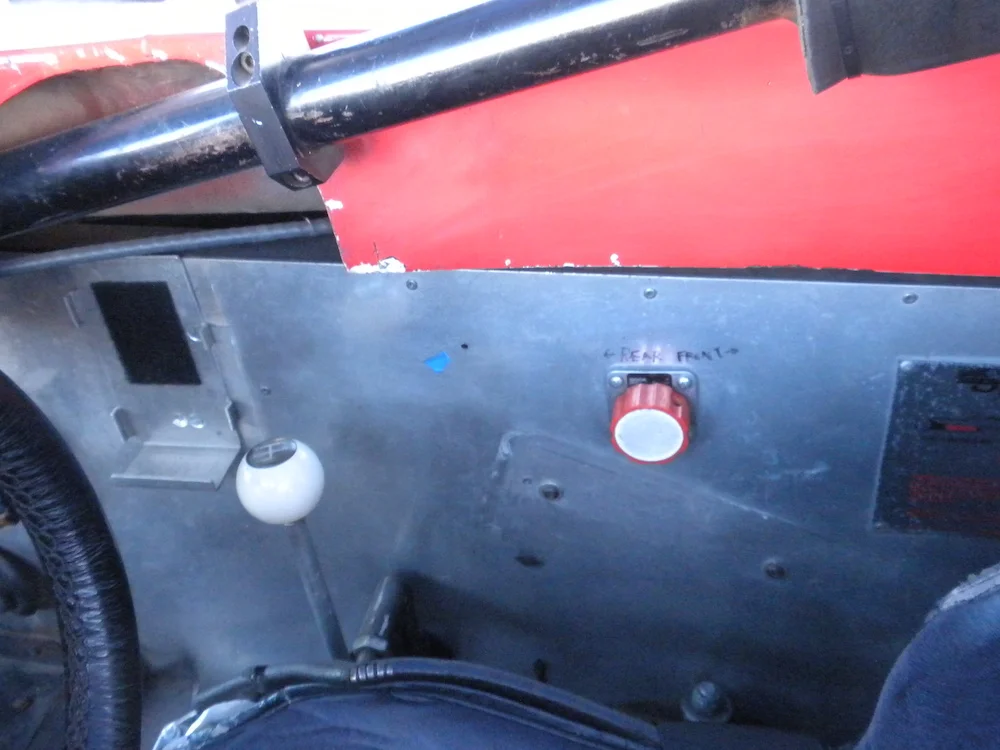
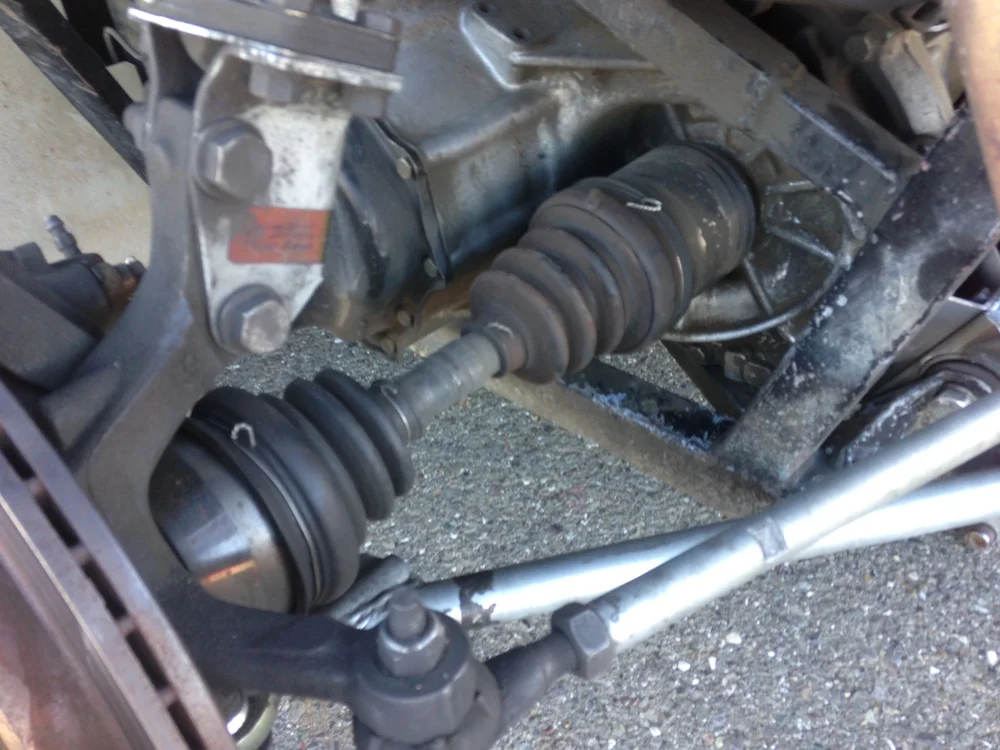
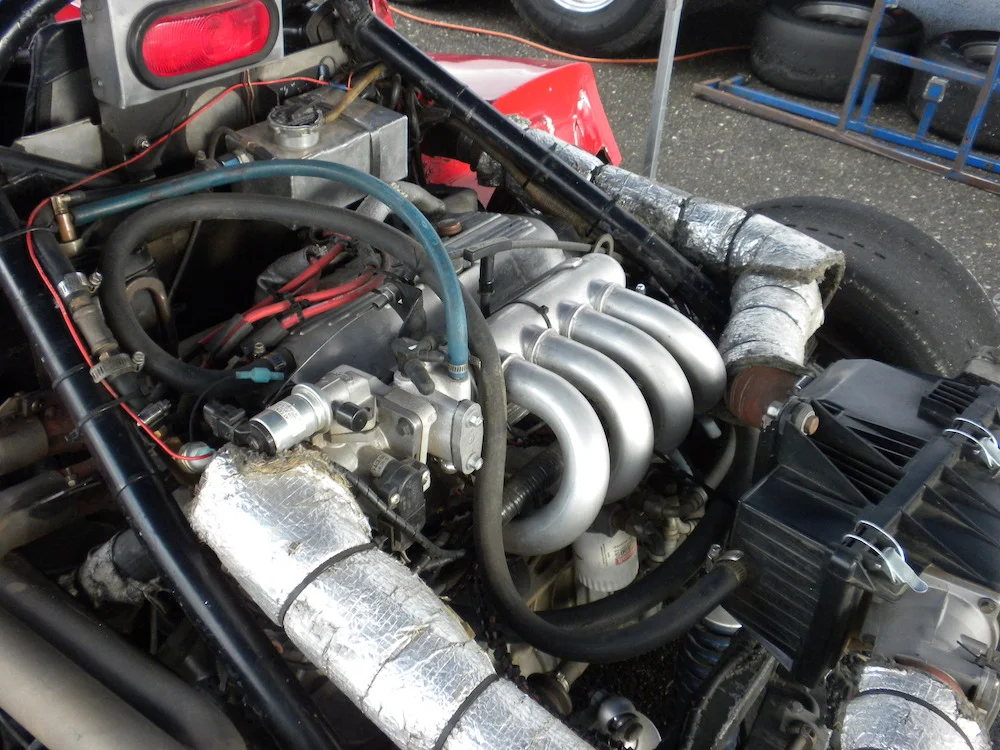
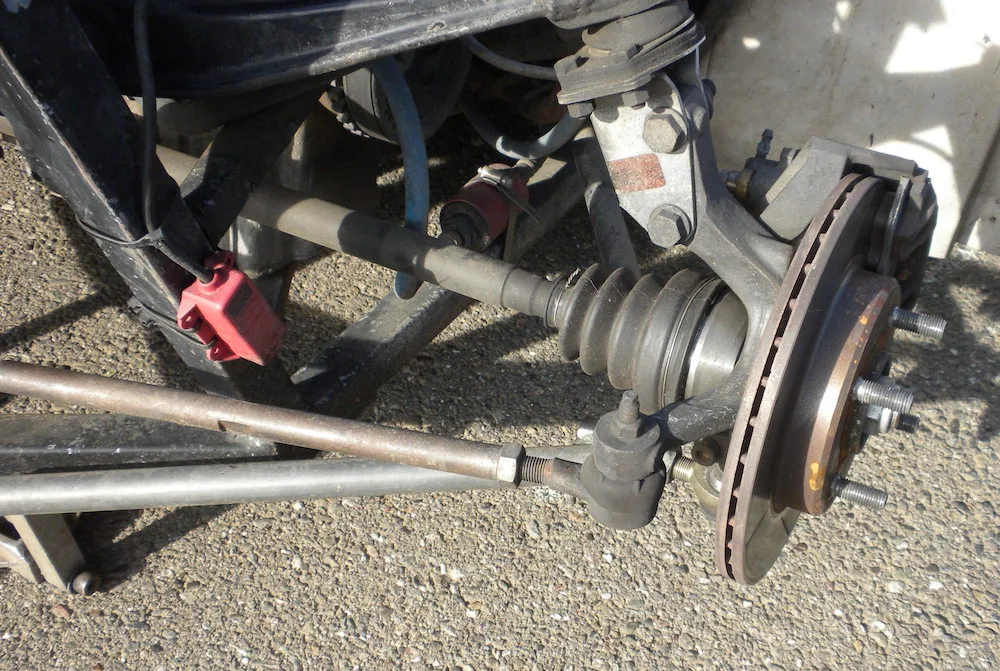
Suspension
There are several types of wheels available for the Spec Racer Ford known as the Steel, Shelby, Welds and now the new cast wheels. The wheels are different weights, the more recent wheels are lighter and so offer a rotational and unsprung weight advantage. The welds have been known to bend or become out of round from a hard hit or jumping too many curbs.
The Rocker arms can be expensive items. There are two types of rocker arms the stamped sheet metal and the new tubular rockers. A set of tubular rockers in good condition can add additional value to the car.
Look for shape variations and bowing in the rocker arms. It can be hard to see small changes but you can also look at the shocks and the spring perch heights, used to set the ride height. A small variation in the placement of the rings might be to get the correct corner weights but larger difference might indicate bent rockers.
If you have the stamped wheel metal rockers you can feel underneath with you fingers for signs of fatigue or cracking. Also check for cracks or fatigue in the rocker arm pivot mounts. Repairs might require some welding or chassis work.
With the wheels in place jack up that car so the wheels are in the air. Grab the wheel top to bottom and shake it to see if there is any play in the suspension or bearings. Then rotate the wheel 90 degrees and again check for any play. Do this for all 4 wheels. If there is any play isolate it and check to see if it is a wheel bearing, ball joint, rod end or tie rod. Rod ends are relatively easy to replace wheel bearings are a maintenance item but take a little more work.
With the car up in the air you can also pull up on the wheels and suspension and see if you get resistance from the spring and shock absorbers. A lack of resistance could indicate a failing shock absorber that might need to be rebuilt or replaced.
There are two types of shock absorbers available for the Spec Racer Ford, Penske and Koni. The Koni shock needs to be removed from the car to make adjustments. The Penske shock can be adjusted on the car providing an obvious time advantage on a test day.
Inspect the sway bars and connecting rod ends. Ensure there is no binding or ceased rod ends that need replacing. Inspect the uprights for bent arms, hubs for cracks and overall condition of the wheel studs.
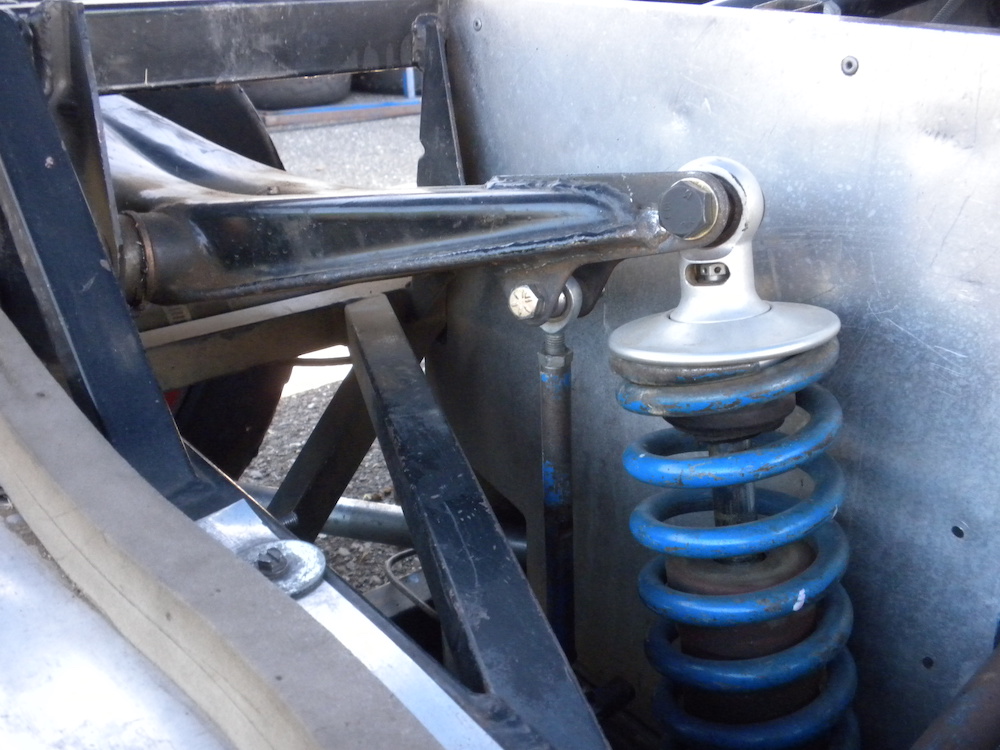
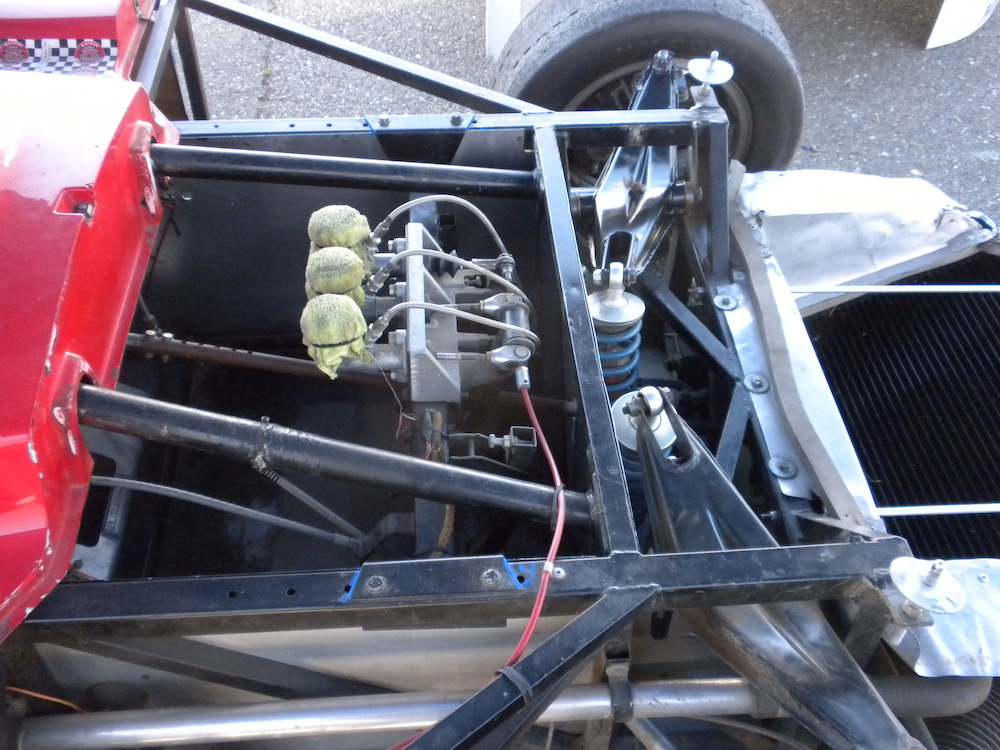
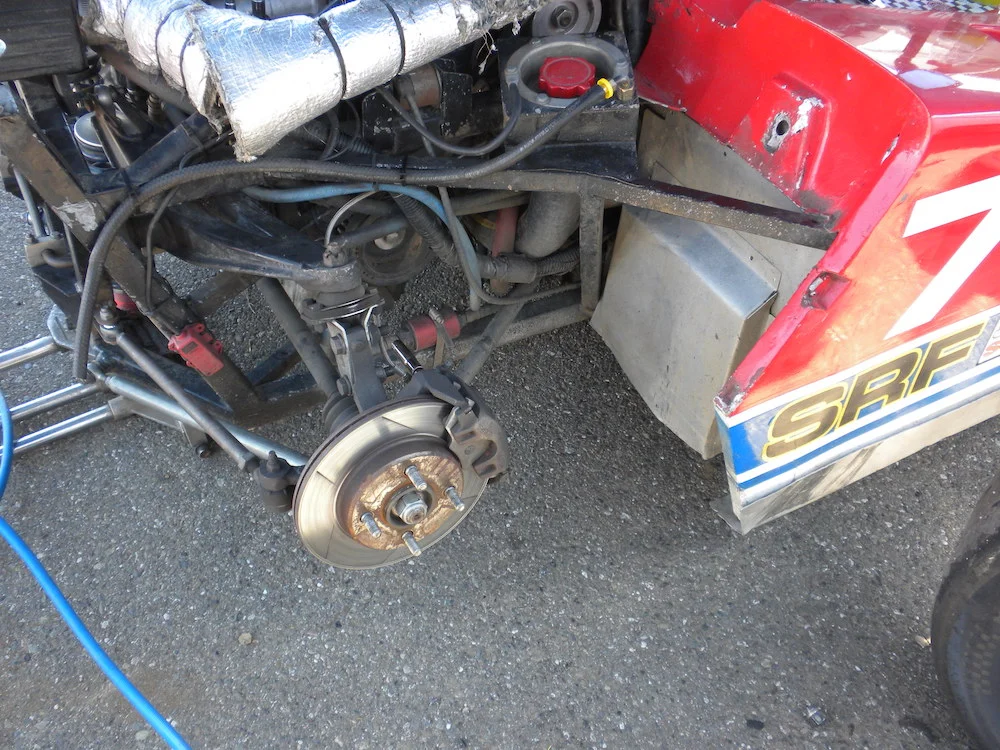
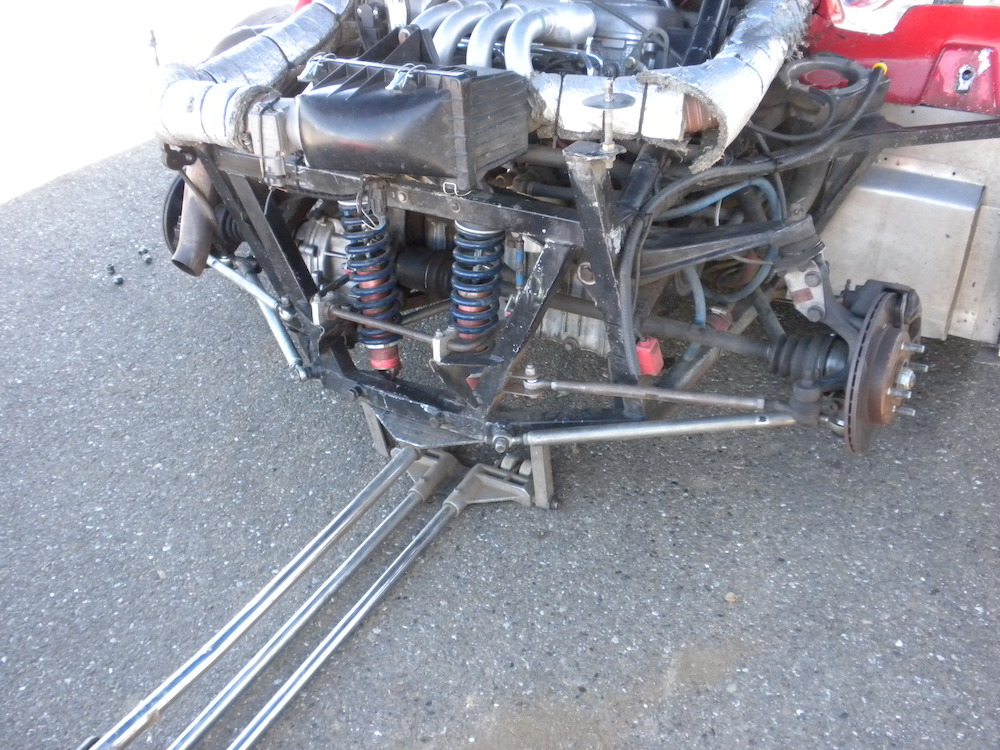
Brakes
Brakes are a critical element of the car. The older solid brake rotors are no longer legal for competition. The new vented rotors are easily spotted by the surface slots. If the car hasn't run for a little time then you will need to replace the rotors to the new version to be legal for competition.
The Brake bias adjuster is an upgrade available to the spec racer fords, it allows for cockpit adjust of the braking balance of the car and can be a great advantage during long sprint races or endurance racing.
Inspect the brake calipers condition ensure there are no leaks from the line and bleeder fittings. Check the pads have sufficient material left and there is even wear on the inside and outside pads. If there is a large discrepancy it might indicate uneven clamping and therefore binding in the calipers. The bushings and pins wear over time and might need to be replaced. Check for smooth operation of the pins and ensure they are not mushroomed.
The clutch and brake master cylinders are known to leak out the top caps. It happens if the fluid is hot and overfilled, so there will likely be a towel or fabric over the top. This is normal, it prevents the fluid spilling on the pedals or drives feet and causing a dangerous situation. Inspect the fluid, if it is cloudy it could be old and full of moisture. If it is dark and cloudy it might indicate that the seals are starting to failing and the master cylinder might need replacing. Inspect the remaining brake lines for wear or leaks and note anything that needs attention.
While checking the brake master cylinders inspect the pedals. The pedals should operate smoothly and the accelerator needs a strong return spring. Make sure the accelerator cable is tight without play at the butterfly. Ensure that the accelerator pedal reaches wide open throttle when fully depressed. You can see this by removing the intake tube and watching the butterfly open when depressing the pedal.
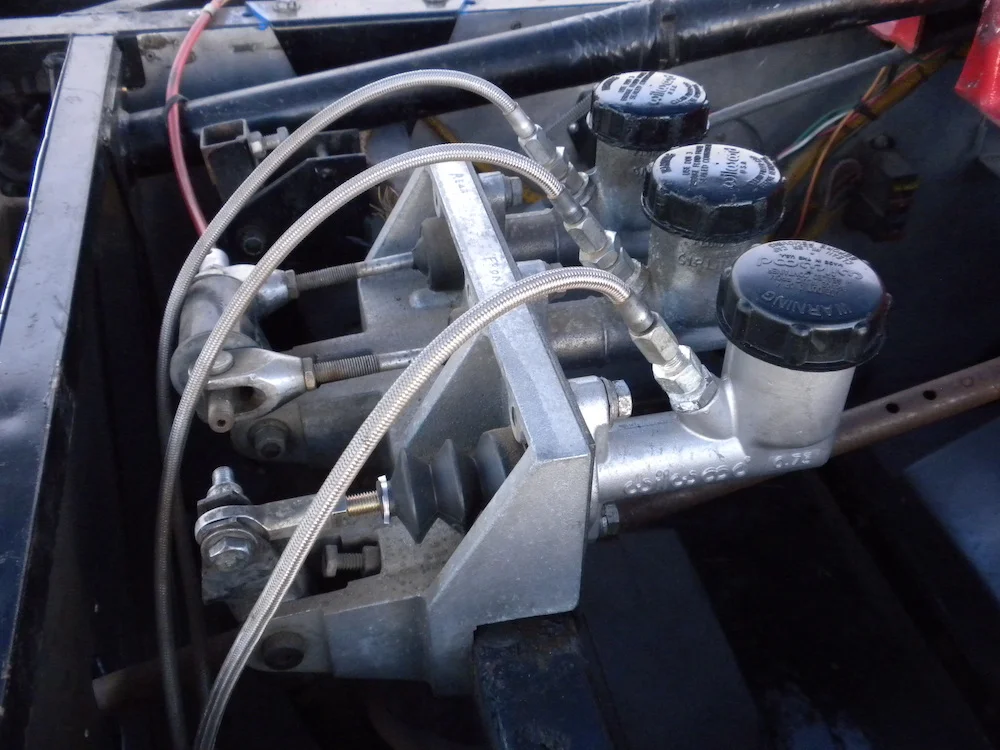
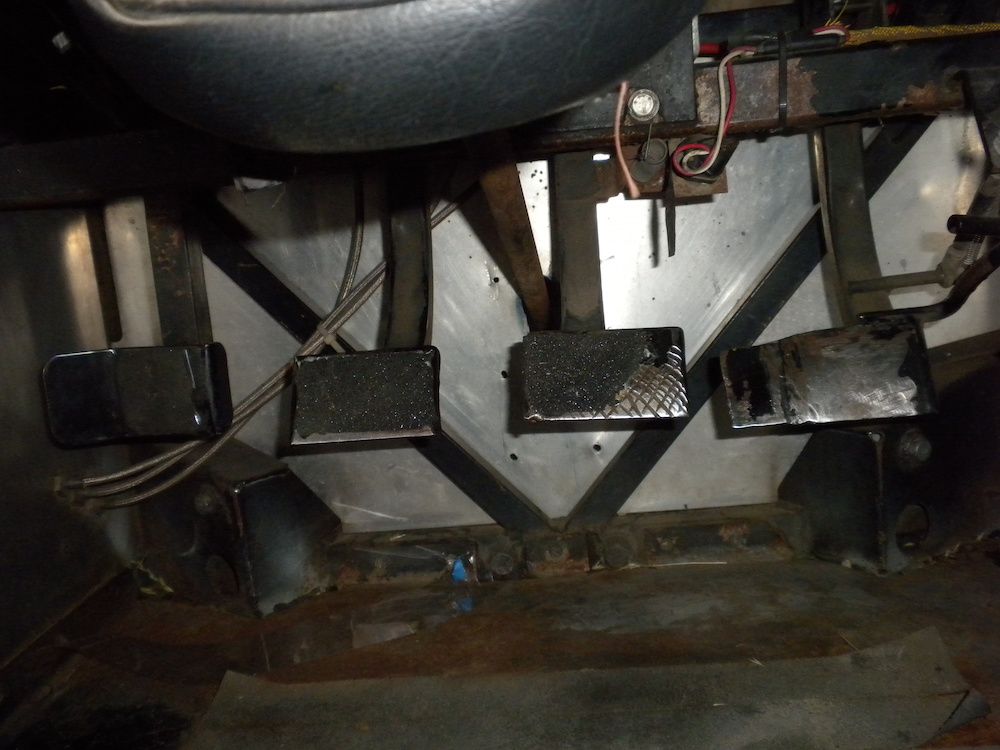
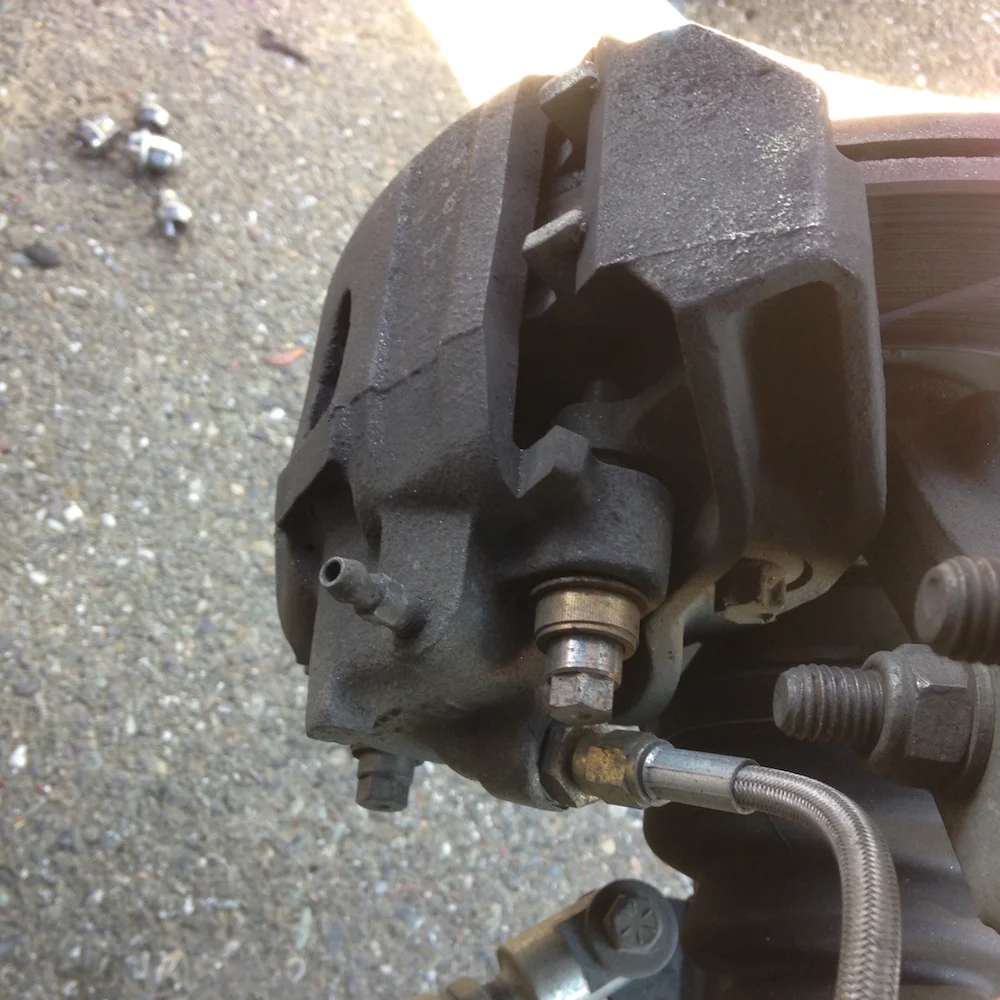
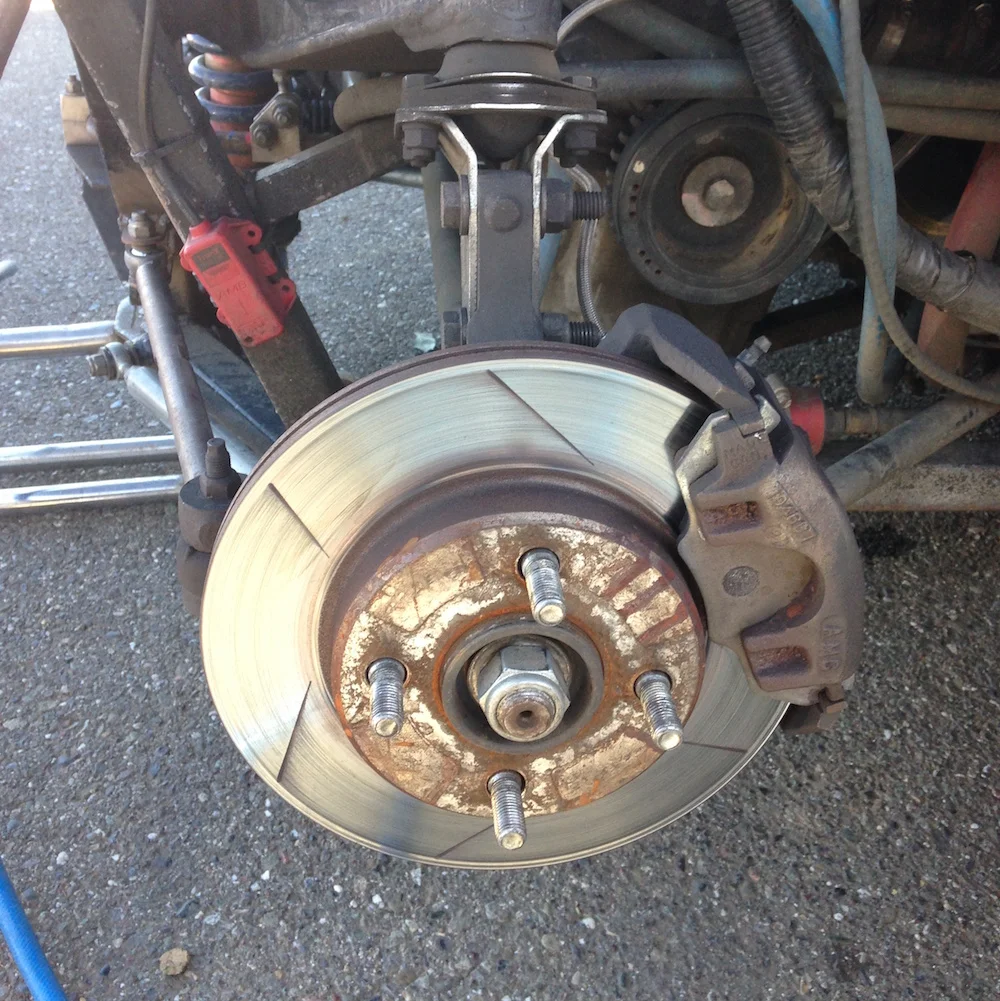
Fuel & Electrical
While looking at the fuel lines check for common upgrades such as the in tank fuel pump and adjustable fuel pressure regulator. The adjustable fuel pressure regulator can be seen along the fuel rail it comes in handy for dyno tuning the motor. If the fuel pump is not located on the lower frame rail then it has likely been upgraded to the in tank fuel pump. Ask the previous owner or check the maintenance record to make sure. Also look at the age of the fuel filter it might need replacing. Check the fuel filler neck is not deteriorated and does not leak, it is not expensive to replace but can be a fair bit of time and hassle to route around the engine to the fuel tank.
Inspect the general condition of the electrical system. Has the car been sitting for a long time. If so, make sure there battery is not dead or too old. There are two harnesses for the car: 1) the engine harness that runs to the ECU on the right side pod and 2) the instrumentation and charge circuit.
If you are able you want to check the plug wires and spark plugs. Just like your regular road car the spark plugs shouldn't be corroded or have cracks in the insulator. The higher end plug wires are Magnecors, make sure they have some sort of thermal insulate covers as they can get very hot near the exhaust headers on the Gen2.
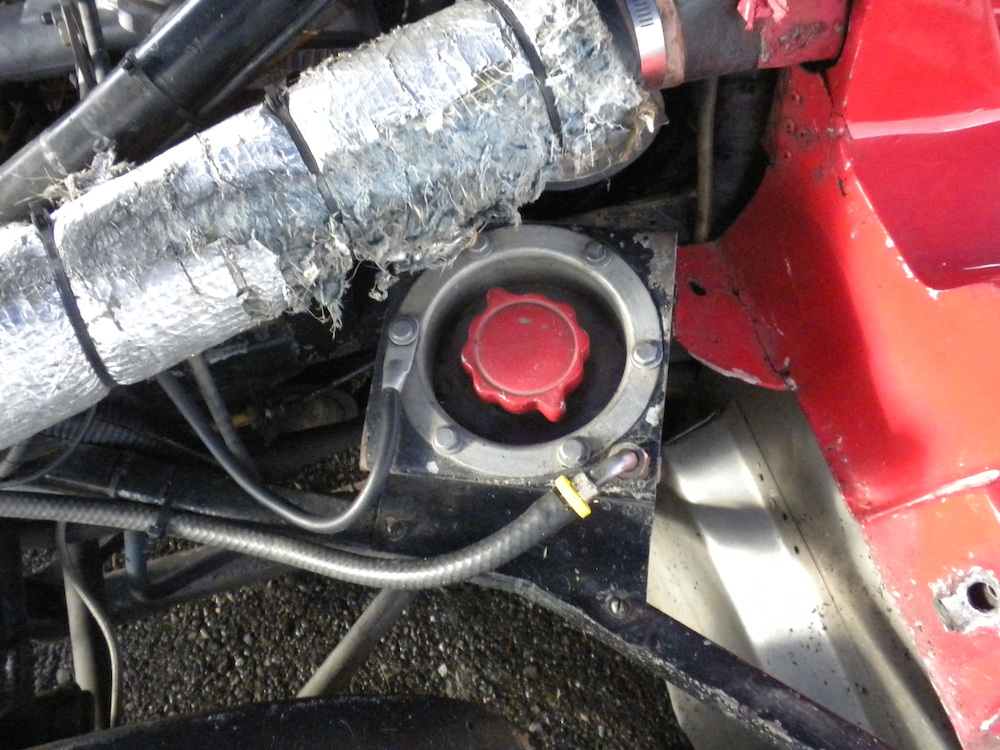
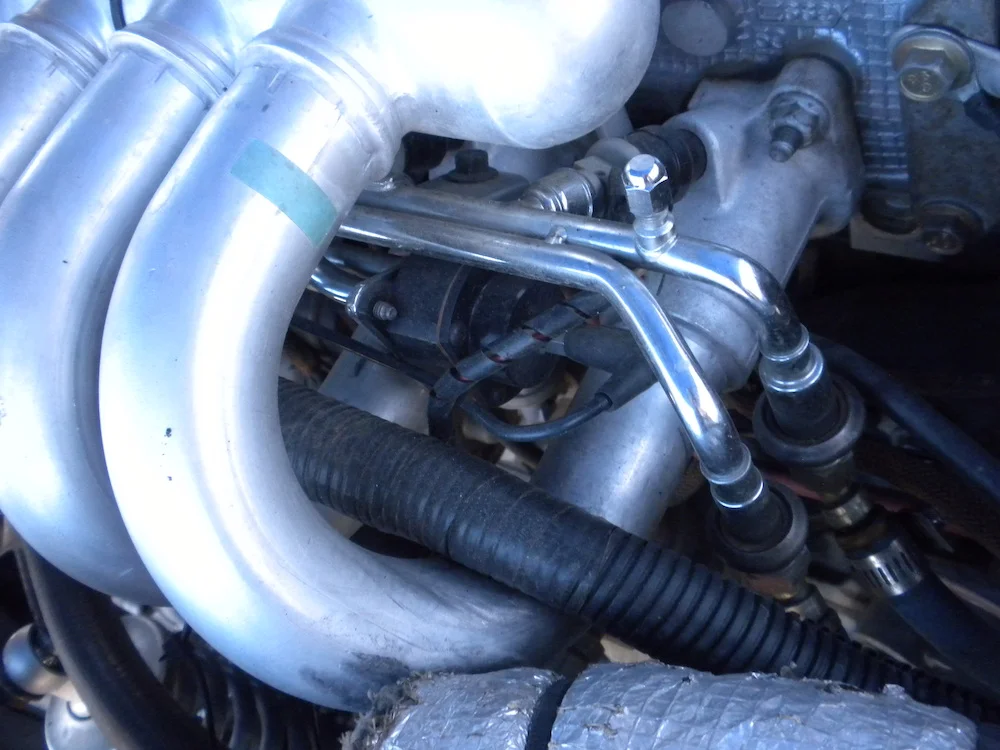
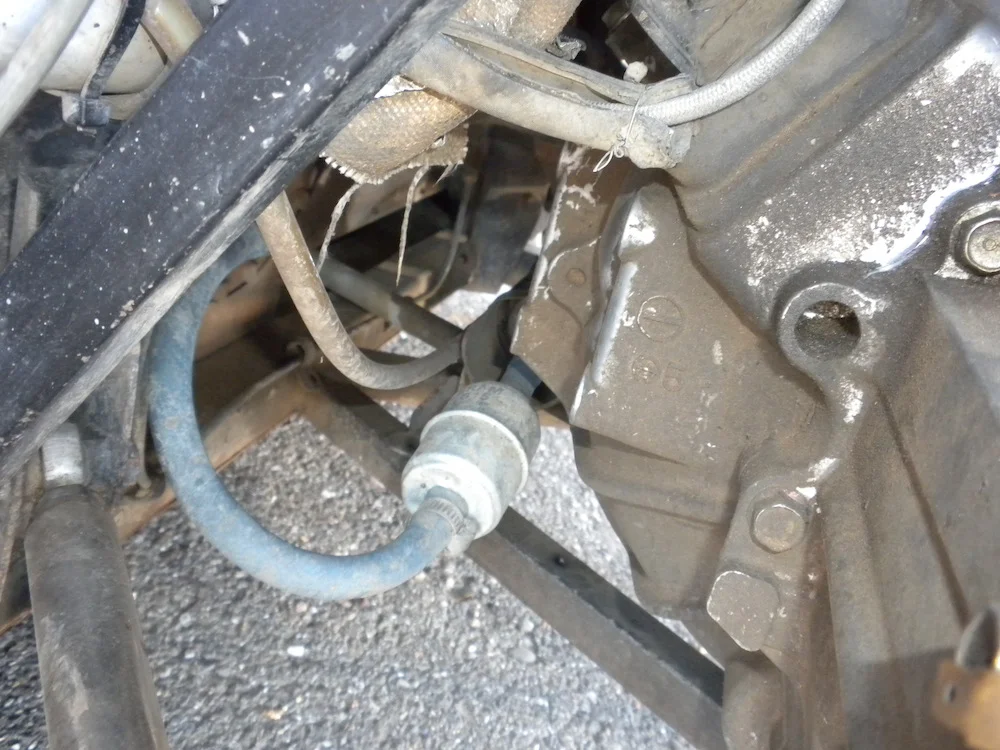
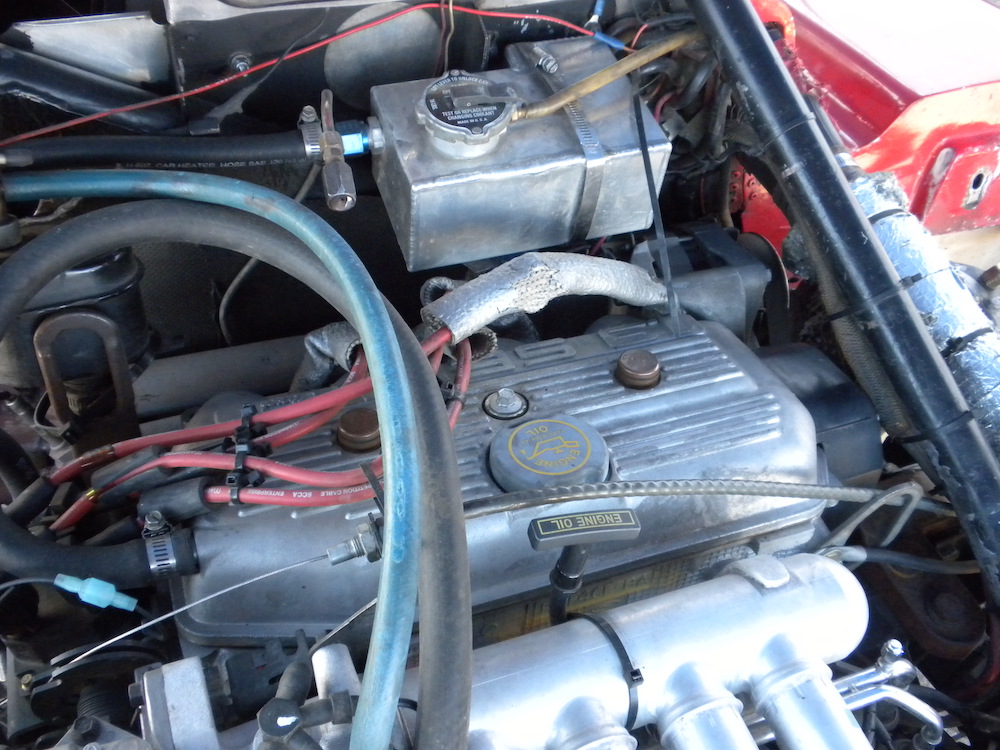
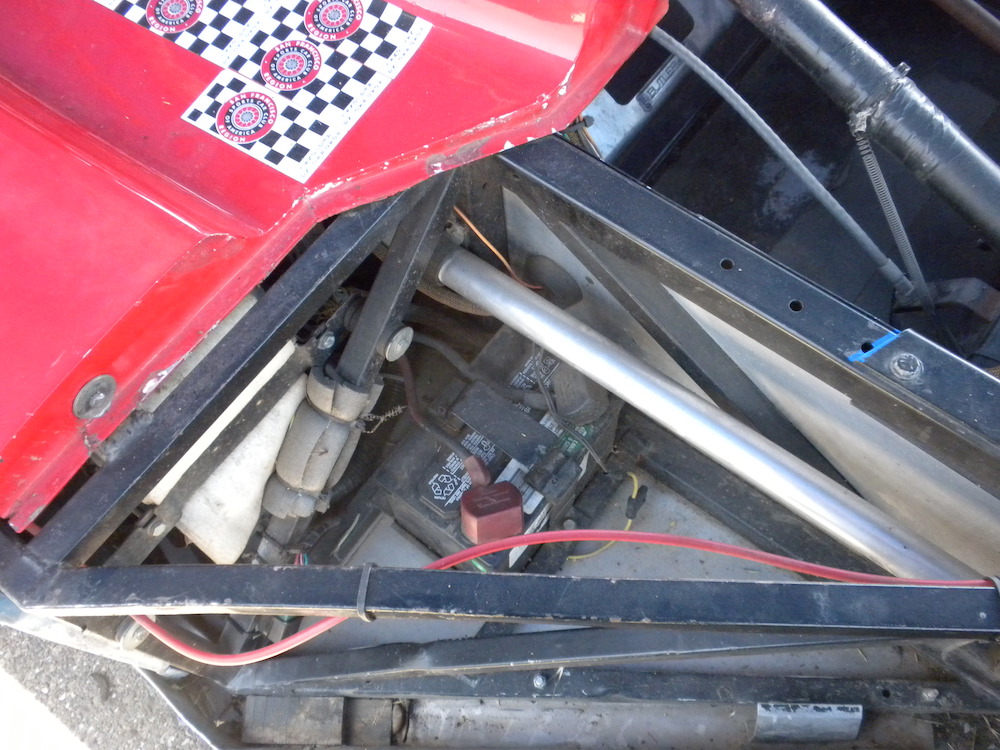
INSTRUMENTS AND DATA:
The basic instrumentation for the car will be a tachometer, oil pressure and coolant temperature gauges. Other common items racers add are shift lights, alternator charge light and water pressure warning light.
Check to see there is a transponder with the car and that it is placed in the correction location according to the SCCA General Competition rules.
Some cars will come with integrated data systems and depending on the level of data system it can add value to the car. A simple lap timer can be very useful, although they are being rapidly replaced by the latest GPS and IMU integrated data systems such as the AIM Solo. More complex systems integrate brake pressure, steering angle or even the CAN bus data from the engine. The next level systems include configurable digital dashes with shift and warning lights. These complex systems with numerous sensor can be pricey and so might add additional value to the car if that is what you are looking for.
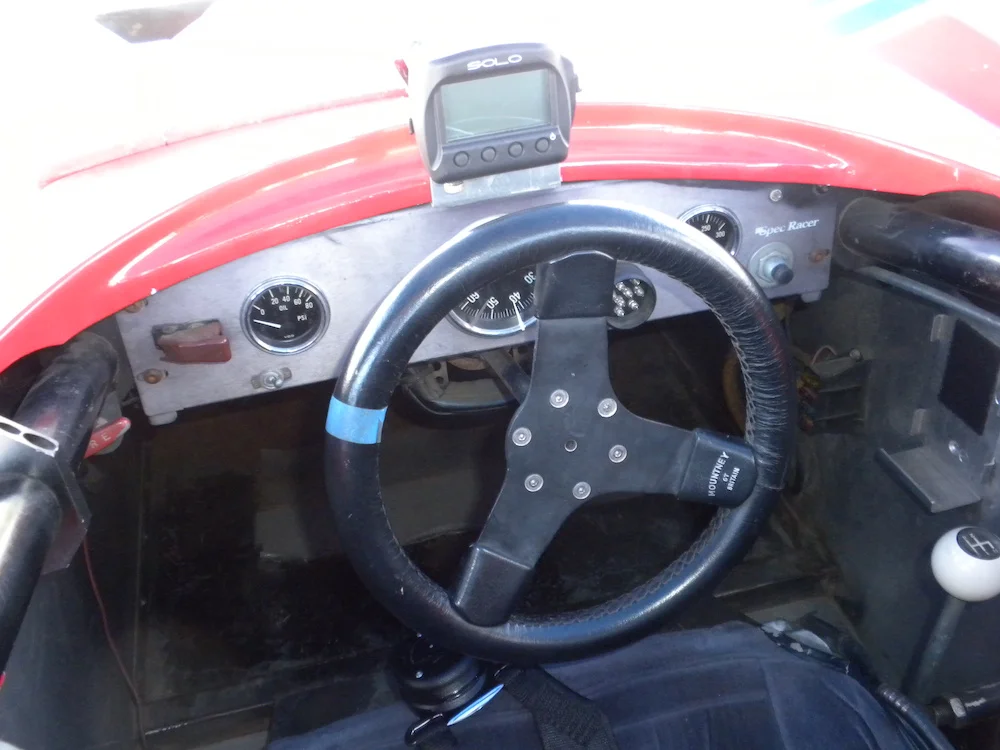
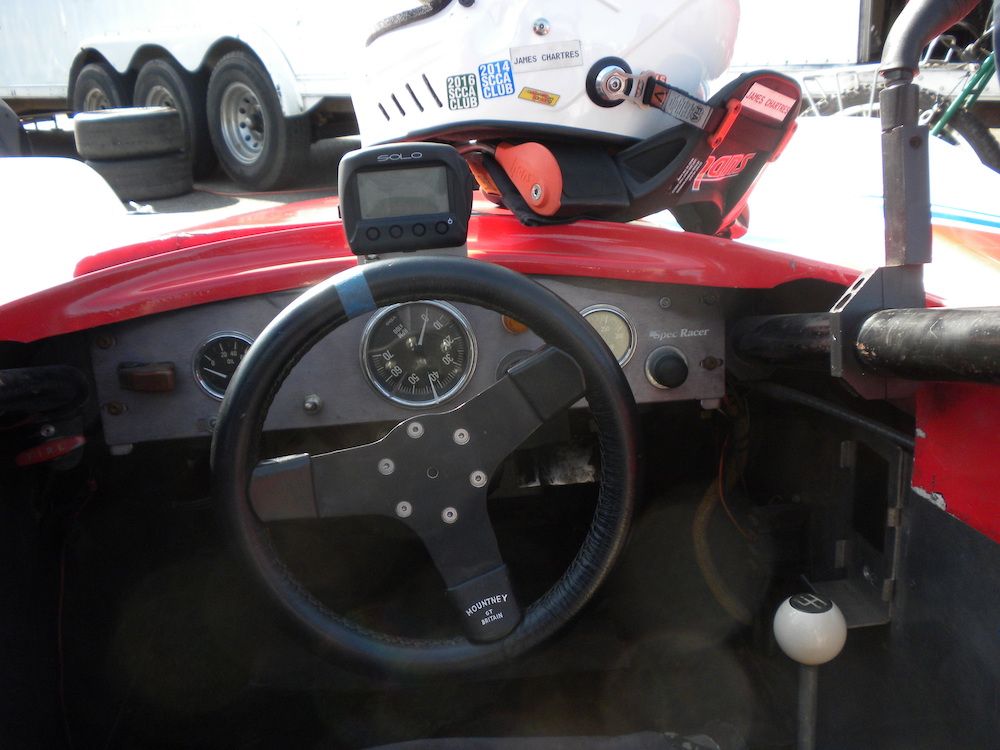
EXTRAS & SPARES:
Other things to look for when you are buying a Spec racer Ford is some extra parts and unique items for the car. An few extra sets of wheels are normally needed to you can mount new tires while you are using your old tires. You also might like a set for the wet weather tires that might be used once or twice a season. Common spares include:
- Laguna Muffler
- Spare sets of wheels
- Quick jack
- Low Jack Stands
- Fuel jugs
- Spare parts (uprights, brake rotors and pads, bearings, suspension links, etc)
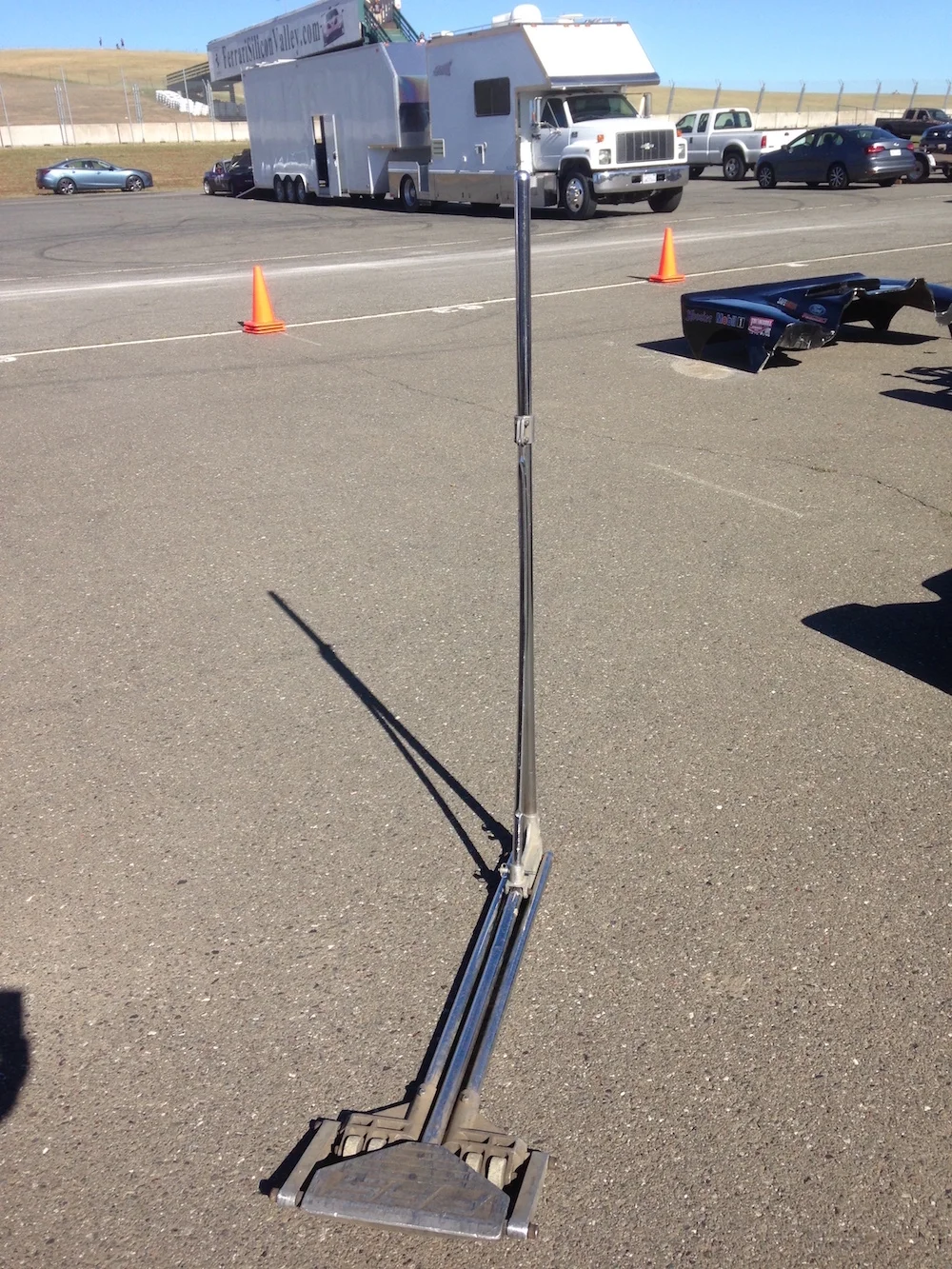
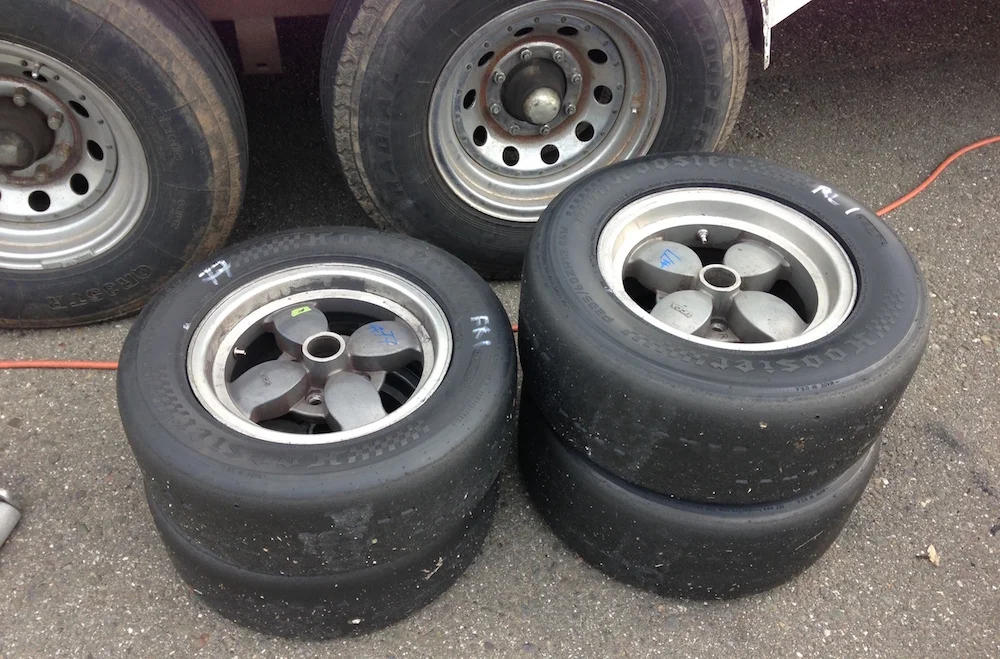

Summary:
These are things to look for in the car, but none of them are a deal breaker. The list provides a guide so you can take into account the amount of the work and cost involved to get the car up to race ready condition.
Spec Racer Ford Buyers Checklist:
Here is a quick summary of the items so you can use it as a checklist when checking out a car.
Documentation:
- Log Book
- Check racing history
- Maintenance history
- Ask other racers about the car
- Check with the local CSR to see they have serviced the car
Safety:
- Seat belts in date
- 2inch shoulders for HANS device
- Fire bottle pressurized
- Seat size fits (ButlerBuilt or Fiberglass)
- Roll bar padding FIA or SFI rated
- ButlerBuilt Head Support System
Chassis:
- Body work and paint in good condition
- Body work weight
- Frame damage
- Fatigue or cracks
- Frame paint or powder coat
ENGINE AND DRIVETRAIN:
- Check SCCA Enterprise seals on motor and transmission
- Motor leaks
- Compression and leak down test data available
- Starts, idles, oil pressure
- Motor dynosheet
- Smooth operation of shifter
- 5th gear upgrade
- Intake old style or metal tubing
- Driveshafts, Tripods and CVs without binding and free of play
- Boots and seals in good condition
- Oil line rubber or braided
- Radiator and coolant system check for leaks
- Header tanks check for cracks
- Overflow bottle and tubing in good condition
Suspension:
- Steering wheel size and type
- Wheels (Steel, Shelby, Welds, Cast Enterprise)
- Wheel Bearings
- Suspension free of play
- Ball joints in good condition
- Rocker Arms (Tubular or stamped sheet)
- Penske or Koni shock
- Inspect uprights for bent arms
- Inspect hubs for cracks
Brakes:
- Pad and rotor life
- Brake fluid condition
- Vented rotors
- Spare pads and rotors
- Check for frayed or pinched lines
- Caliper fluid leaks
- Master cylinder fluid leaks
ELECTRICAL
- Age of fuel cell
- Fuel cell leaks
- Fuel filler neck does not leak
- Adjustable fuel pressure regulator
- In tank versus external fuel pump
- Plug Wires condition
- Magnecore Plug Wires
Instruments and Data:
- Tachometer
- Oil pressure gauge
- Alternator working light
- Water pressure light or gauge
- Water temperature gauge
- Transponder
- Data acquisition system
- Integrated electronic dash
EXTRAS & SPARES:
- Spare sets of wheels and/or tires
- Laguna Muffler
- Set of rain tires
- Quick jack
- Low Jack Stands
- Fuel jugs
- Spare parts (uprights, brake rotors and pads)

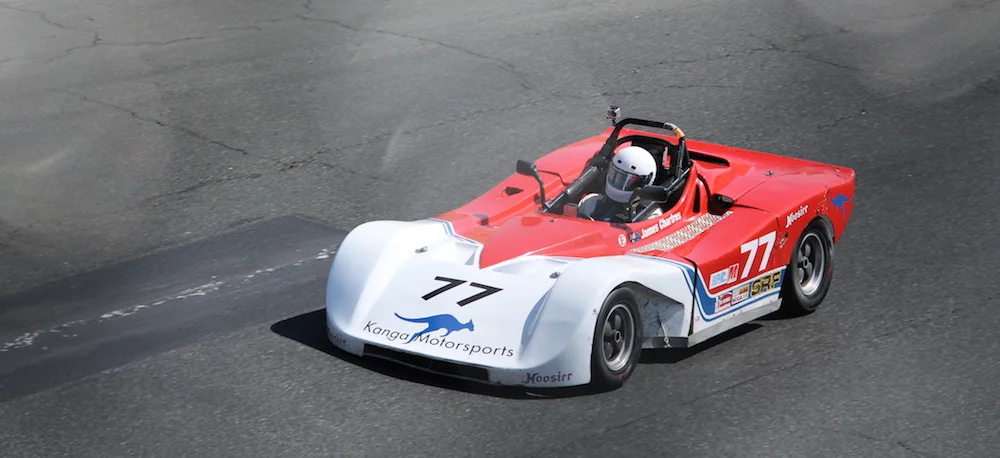












With the Holiday Season fast approaching, what do you get the racecar driver in your life? Why not get them some new safety gear, a useful tool or even some track side apparel.